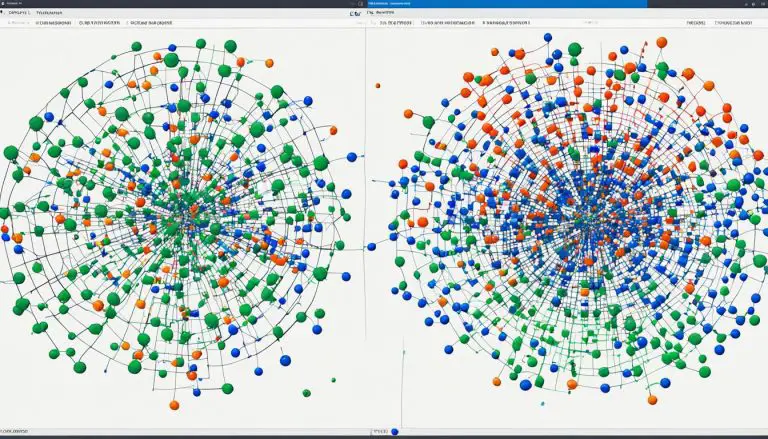Understanding ARP in Networking: What Is It, And Why It Matters
As a professional in the field of networking, I believe it is crucial to have a solid understanding of ARP (Address Resolution Protocol) and its significance in computer networks. ARP serves as the bridge between IP addresses and MAC addresses, allowing for smooth and efficient communication between devices. Developed in 1982 by the Internet Working Group, ARP remains a foundational protocol in modern networking technology.
ARP, or Address Resolution Protocol, is a vital component of computer networks. It is responsible for linking IP addresses to MAC addresses, enabling devices to communicate effectively. Without ARP, the devices within a network would be unable to connect and share data. In essence, ARP acts as the translator between IP addresses, which are used to identify devices on a network, and MAC addresses, which are unique identifiers assigned to network interface cards. By establishing this connection, ARP facilitates accurate and efficient communication within the network.
Key Takeaways:
- ARP is a protocol that connects IP addresses to MAC addresses in computer networks.
- It enables efficient and accurate communication between devices on a network.
- ARP was developed in 1982 by the Internet Working Group and remains crucial in modern networking.
- Without ARP, devices within a network would be unable to connect and share data.
- ARP serves as the foundation of connectivity in computer networks.
How Does ARP Work?
ARP, or Address Resolution Protocol, is a fundamental protocol in computer networks that plays a crucial role in enabling efficient communication between devices. It works by translating IP addresses to MAC addresses, allowing data to flow seamlessly within a network. When data arrives at a network gateway and needs to connect with a machine within the local area network (LAN), ARP is used to find the MAC address that corresponds to the IP address in the data packet.
The ARP protocol relies on MAC addresses and IP addresses to establish communication between devices. The process involves several steps. First, when data arrives at the network gateway, ARP checks if the MAC address corresponding to the IP address is already present in the ARP cache. If not, it sends an ARP request to all devices in the network, asking for the MAC address associated with the IP address in question. The device that holds the corresponding IP address responds with its MAC address, allowing the data to be sent to the correct recipient.
The ARP cache plays a critical role in this process. It is a temporary table that stores MAC address information for future reference. Whenever an ARP request is made and a response with a MAC address is received, the information is stored in the ARP cache. This cache helps expedite future data transmissions by eliminating the need for repeated ARP requests. However, it is important to note that the ARP cache can also be exploited by malicious actors through techniques like ARP spoofing, where fake ARP messages are used to redirect data to unauthorized destinations.
ARP Cache Table
| IP Address | MAC Address | Interface |
|---|---|---|
| 192.168.1.1 | 00:0a:95:9d:68:16 | eth0 |
| 192.168.1.2 | 00:0a:95:9d:68:17 | eth1 |
| 192.168.1.3 | 00:0a:95:9d:68:18 | eth2 |
While ARP is a vital protocol for network connectivity, it is not without its vulnerabilities. ARP spoofing, for example, can be used by attackers to redirect data and launch man-in-the-middle attacks. Implementing security measures such as ARP snooping, which monitors and validates ARP messages, can help prevent and detect such attacks. By understanding how ARP works and being aware of its potential risks, network administrators can take appropriate measures to ensure secure and reliable communication within their networks.
The Importance of ARP in Networking
ARP plays a crucial role in networking by enabling efficient and accurate communication between devices. It acts as a bridge between IP addresses and MAC addresses, ensuring seamless data transmission within a network. Without ARP, devices would not be able to connect and exchange information effectively, leading to communication failures and disruptions in network connectivity.
One of the key benefits of ARP is its ability to map IP addresses to MAC addresses. By doing so, ARP allows devices to identify the destination of data packets and send them to the correct device. This mapping process ensures that data is delivered accurately and efficiently, improving the overall performance of the network.
Additionally, ARP plays a vital role in maintaining network protocols and applications. It enables various network services, such as DHCP (Dynamic Host Configuration Protocol) and routing protocols, to function effectively by providing the necessary address resolution. ARP ensures that devices can communicate with each other seamlessly, enabling the smooth operation of network services and applications.
Enhancing Network Efficiency and Reliability
ARP not only facilitates communication between devices but also enhances network efficiency and reliability. By providing accurate address resolution, ARP reduces the chances of data transmission errors and ensures that packets are delivered to the correct destination. This improves the overall performance of the network and minimizes disruptions in data flow.
Furthermore, ARP helps in load balancing by distributing network traffic evenly across devices. By resolving IP addresses to MAC addresses, ARP allows network devices to identify the most appropriate path for data transmission, preventing bottlenecks and optimizing network resources. This promotes efficient utilization of network resources and ensures smooth and reliable performance.
In conclusion, ARP is of paramount importance in networking. It enables efficient communication between devices, enhances network efficiency and reliability, and supports the smooth operation of network protocols and applications. By understanding the role and benefits of ARP, network administrators can effectively manage and troubleshoot network connectivity issues, ensuring seamless data transmission and optimal network performance.
Types of ARP Variations
While the standard Address Resolution Protocol (ARP) protocol is widely used in computer networks, there are several variations that companies often experiment with to suit their specific needs. These variations offer different functionalities and advantages depending on the network environment. Here are three common types of ARP variations:
1. Inverse ARP
Inverse ARP (InARP) is a variation of ARP where a system begins with the MAC address and requests an IP address. It is commonly used in environments with Asynchronous Transfer Mode (ATM) networks. InARP allows ATM devices to determine the corresponding IP address for a given MAC address, enabling seamless communication between IP-based devices and ATM devices.
2. Proxy ARP
Proxy ARP is another variation of ARP that is often used in complex network architectures. In a Proxy ARP setup, a device on the network handles ARP requests coming from IP addresses that are not on the local area network (LAN). It allows devices on the network to communicate with devices on other networks by acting as an intermediary, responding to ARP requests on behalf of devices that are not directly connected.
3. Neighbor Discovery Protocol (NDP)
While not strictly an ARP variation, the Neighbor Discovery Protocol (NDP) is an alternative protocol used in IPv6 networks. NDP is responsible for address resolution, duplicate address detection, and router discovery. It allows computers to maintain lists of known addresses rather than relying solely on an active protocol for address lookup. NDP plays a crucial role in the functioning of IPv6 networks and replaces ARP in these environments.
These variations of the ARP protocol provide flexibility and additional features for different network requirements and technologies. Each variation serves a unique purpose in specific network setups, ensuring efficient communication and connectivity.
| ARP Variation | Description |
|---|---|
| Inverse ARP (InARP) | A variation of ARP used in ATM networks to determine the IP address for a given MAC address. |
| Proxy ARP | A variation of ARP where a device on the network handles ARP requests coming from IP addresses outside the local network, acting as an intermediary. |
| Neighbor Discovery Protocol (NDP) | An alternative protocol used in IPv6 networks for address resolution, duplicate address detection, and router discovery. |
Each of these ARP variations offers unique functionalities and benefits, allowing network administrators to tailor their network setups to specific requirements and technologies.
ARP Cache and ARP Timeout
ARP cache is a crucial component in networking that stores the mappings of IP addresses to MAC addresses. Whenever an ARP request is made and a response with a MAC address is received, this information is stored in the ARP cache for future reference. The ARP cache is a temporary table that includes both dynamic and static entries. Dynamic entries are automatically added and removed based on network activity, while static entries are reserved for broadcast addresses.
The ARP cache plays a significant role in enhancing network performance by reducing the need for ARP requests and responses for frequently accessed IP addresses. By storing this information locally, devices can quickly retrieve the MAC address of a known IP address, allowing for more efficient communication within the network.
However, it’s important to note that entries in the ARP cache have a limited lifespan. This duration is known as the ARP timeout. When an entry in the ARP table reaches its timeout period, it is considered expired and will be removed from the cache. By regularly refreshing the ARP cache, network devices ensure that the MAC address information remains up to date and accurate, promoting seamless communication.
| MAC Address | IP Address |
|---|---|
| 00:0a:95:9d:68:16 | 192.168.1.1 |
| 00:0b:82:fd:12:45 | 192.168.1.2 |
| 00:0c:71:54:29:83 | 192.168.1.3 |
“The ARP cache is like a phonebook for network devices. It allows devices to quickly lookup MAC addresses for known IP addresses, eliminating the need for constant ARP requests and reducing network latency.”
ARP Timeout
The ARP timeout varies depending on the network device and configuration. In most cases, the default timeout period ranges from a few minutes to several hours. However, network administrators can adjust this value to suit the specific requirements of their network. Shorter timeout periods can help ensure more accurate MAC address information, but may also increase the frequency of ARP requests and the overall network traffic.
In summary, the ARP cache is a key component in networking that stores the mappings of IP addresses to MAC addresses. It enhances network performance by reducing the need for constant ARP requests and responses. The ARP cache also has a timeout period, ensuring that the MAC address information remains current and accurate. Understanding the concept of ARP cache and its timeout can help network administrators troubleshoot network connectivity issues effectively.
How to View ARP Cache
If you are a network administrator or simply curious about the IP and MAC address mappings in your network, you can easily view the ARP cache using a few simple commands. Here’s how to do it on different operating systems:
Windows:
To view the ARP cache on a Windows operating system, open the command prompt by pressing the Windows key + R, type “cmd,” and press Enter. In the command prompt window, type “arp -a” and press Enter. This command will display a list of known IP addresses and their associated MAC addresses.
Mac:
If you are using a Mac, open the Terminal application. You can find it in the Utilities folder within the Applications folder. In the Terminal window, type “arp -a” and press Enter. Similar to the Windows command, this will show you the ARP cache with IP addresses and MAC addresses.
Linux:
On Linux systems, open the terminal and enter the command “arp -a. This will give you a similar output to the Windows and Mac commands, displaying the ARP cache with IP and MAC addresses.
By viewing the ARP cache, you can gain valuable insights into the devices connected to your network and ensure that the IP-to-MAC address mappings are accurate. This information can be useful for troubleshooting network connectivity issues, identifying potential unauthorized devices, or simply understanding the network topology.
| Operating System | Command |
|---|---|
| Windows | arp -a |
| Mac | arp -a |
| Linux | arp -a |
ARP Spoofing and Security Risks
ARP spoofing, also known as ARP cache poisoning, is a malicious attack where an attacker crafts fake ARP messages to associate their MAC address with a legitimate LAN IP address. This allows the attacker to intercept and redirect data intended for the victim’s device, leading to potential man-in-the-middle attacks.
ARP spoofing poses significant security risks in networks and can compromise data confidentiality and integrity. By manipulating the ARP cache, attackers can deceive network devices into sending sensitive information to unauthorized destinations. This can result in unauthorized access to confidential data, unauthorized monitoring of network traffic, and potential data manipulation or theft.
It is essential for network administrators to implement measures to prevent and detect ARP spoofing attacks. Secure network protocols, such as IPsec (Internet Protocol Security), can encrypt network traffic and mitigate the risk of interception by attackers. Additionally, network monitoring tools can be employed to detect abnormal or suspicious ARP behavior, such as a sudden increase in ARP requests or responses. Regularly updating network devices and implementing security patches can also help mitigate the risk of ARP spoofing.
Impact of ARP Spoofing:
- Compromise of data confidentiality: ARP spoofing allows attackers to intercept sensitive data, such as passwords or financial information, by redirecting it to their own devices. This compromises the confidentiality of the data and exposes it to potential misuse.
- Data integrity risks: By redirecting data, attackers can manipulate it or inject malicious content, compromising the integrity of the transmitted data. This can lead to erroneous or altered information being received by the intended recipient.
- Disruption of network services: ARP spoofing attacks can cause network congestion and disruption by redirecting or blocking network traffic. This can result in slow network performance, unresponsive applications, or complete network outages.
- Identity theft and unauthorized access: ARP spoofing can facilitate identity theft by intercepting login credentials or other sensitive information. Attackers can then use this information to gain unauthorized access to systems or impersonate legitimate users.
In conclusion, ARP spoofing poses significant security risks in networks. It is crucial for network administrators to be aware of this threat and implement appropriate security measures to protect against it. By understanding the impact of ARP spoofing and implementing preventive measures, network administrators can safeguard the integrity, confidentiality, and availability of their network infrastructure and data.
| Security Risks of ARP Spoofing | Impact |
|---|---|
| Compromise of data confidentiality | Exposes sensitive information to unauthorized access and misuse |
| Data integrity risks | Potential manipulation or injection of malicious content in transmitted data |
| Disruption of network services | Causes network congestion, slow performance, or complete outages |
| Identity theft and unauthorized access | Potential misuse of intercepted login credentials and unauthorized system access |
Reverse ARP and Inverse ARP
Reverse Address Resolution Protocol (RARP) and Inverse Address Resolution Protocol (Inverse ARP) are two protocols used in computer networks to simplify the assignment of IP addresses to devices. While RARP has been largely replaced by more advanced protocols such as Bootstrap Protocol (BOOTP) and Dynamic Host Configuration Protocol (DHCP), inverse ARP continues to play a significant role in certain network environments.
RARP is a protocol that allows a network device to obtain an IP address from a router’s ARP table. It is typically used when a new machine is added to a network and needs to acquire an IP address without manual configuration. However, due to limitations and security concerns, RARP has been replaced by more dynamic protocols like BOOTP and DHCP, which provide greater flexibility in IP address assignment and configuration.
Inverse ARP, on the other hand, uses MAC addresses to discover the corresponding IP addresses. It is commonly used in Asynchronous Transfer Mode (ATM) networks, where devices must resolve IP addresses for efficient communication. Inverse ARP helps devices in an ATM network automatically map their MAC addresses to IP addresses, simplifying the configuration process and ensuring seamless connectivity.
While RARP has become obsolete, inverse ARP continues to be relevant in certain network environments. Its ability to automatically map MAC addresses to IP addresses facilitates network configuration and ensures efficient communication in ATM networks. As technology continues to evolve, it is essential for network administrators to stay informed about the latest protocols and their applications to effectively manage and troubleshoot network connectivity.
| Protocol | Description |
|---|---|
| RARP | A protocol used to obtain an IP address (IPv4) from a router’s ARP table |
| BOOTP | The Bootstrap Protocol provides IP address assignment and configuration options |
| DHCP | The Dynamic Host Configuration Protocol dynamically allocates IP addresses in a network |
| Inverse ARP | A protocol that uses MAC addresses to find corresponding IP addresses |
Practical Application of ARP
ARP, or Address Resolution Protocol, plays a crucial role in troubleshooting network connectivity issues and ensuring efficient communication within a network. By understanding how ARP functions and its practical applications, network administrators can effectively manage and resolve network problems.
One practical application of ARP is in identifying and resolving IP address conflicts. When two devices on the same network have the same IP address, it can lead to communication errors and connectivity issues. By checking the ARP cache and examining the IP-to-MAC address mappings, network administrators can quickly identify conflicting IP addresses and take the necessary steps to resolve the conflict.
Another practical use of ARP is in verifying network connectivity. By using the ARP command “arp -a,” administrators can view the ARP cache and ensure that all devices on the network have the correct MAC address mapping. If there are missing or incorrect entries in the ARP cache, it can indicate connectivity issues or potential network configuration problems that need to be addressed.
Furthermore, ARP can be utilized to troubleshoot network connectivity problems by checking ARP tables on routers and switches. These tables provide information about the MAC addresses and IP addresses of devices connected to the network. By analyzing the ARP tables, administrators can identify any discrepancies or inconsistencies that may be causing connectivity issues and take appropriate measures to resolve them.
| Practical Applications of ARP |
|---|
| Identifying and resolving IP address conflicts |
| Verifying network connectivity |
| Troubleshooting network connectivity problems |
Conclusion
In conclusion, ARP is a vital protocol in computer networking that enables devices to communicate by linking IP addresses to MAC addresses. It plays a crucial role in maintaining network connectivity, facilitating data transmission, and ensuring efficient communication within a network. By mapping IP addresses to MAC addresses, ARP allows for seamless data flow between devices, preventing communication failures.
However, it is important to note that ARP is not without its security risks. ARP spoofing, also known as ARP cache poisoning, can compromise data confidentiality and integrity. Network administrators must implement measures to prevent and detect ARP spoofing attacks, such as using secure network protocols and monitoring network traffic.
Understanding how ARP works and its practical applications is essential for network troubleshooting and maintenance. By checking the ARP cache and verifying IP-to-MAC address mappings, network administrators can identify potential issues that may affect network connectivity. Proper knowledge of ARP and its functionalities empowers administrators to effectively manage and troubleshoot network connectivity problems.
FAQ
What is ARP in networking?
ARP (Address Resolution Protocol) is a vital protocol in computer networks that connects IP addresses to MAC addresses, enabling efficient communication between devices.
How does ARP work?
ARP works by translating an IP address to a MAC address, allowing data to be sent and received between devices within a local area network (LAN).
Why is ARP important in networking?
ARP is crucial for maintaining network connectivity, facilitating data transmission, and ensuring efficient communication within a network.
What are the types of ARP variations?
There are various ARP variations, including inverse ARP, proxy ARP, and the Neighbor Discovery Protocol (NDP).
What is ARP cache and ARP timeout?
The ARP cache is a temporary table that stores the mappings of IP addresses to MAC addresses, while ARP timeout refers to the duration an entry resides in the cache before it is considered expired.
How can I view the ARP cache?
The ARP cache can be viewed on Windows, Mac, and Linux operating systems using the “arp -a” command in the command prompt or terminal.
What is ARP spoofing and what security risks does it pose?
ARP spoofing, also known as ARP cache poisoning, is a malicious attack that manipulates ARP messages to redirect data. It poses significant security risks, compromising data confidentiality and integrity.
What is reverse ARP and inverse ARP?
Reverse ARP (RARP) is a protocol used to request an IP address from a router’s ARP table, while inverse ARP uses MAC addresses to find the corresponding IP addresses.
How is ARP applied in practical network troubleshooting?
ARP is useful in troubleshooting network connectivity issues by checking the ARP cache and verifying IP-to-MAC address mappings to identify potential problems.
- About the Author
- Latest Posts
Matthias Böhmichen is the founder of howto-do.it . He is using Linux since 1991 and fell in love with windows a few years later. He likes to discover new technologies, especially hard- and software.





